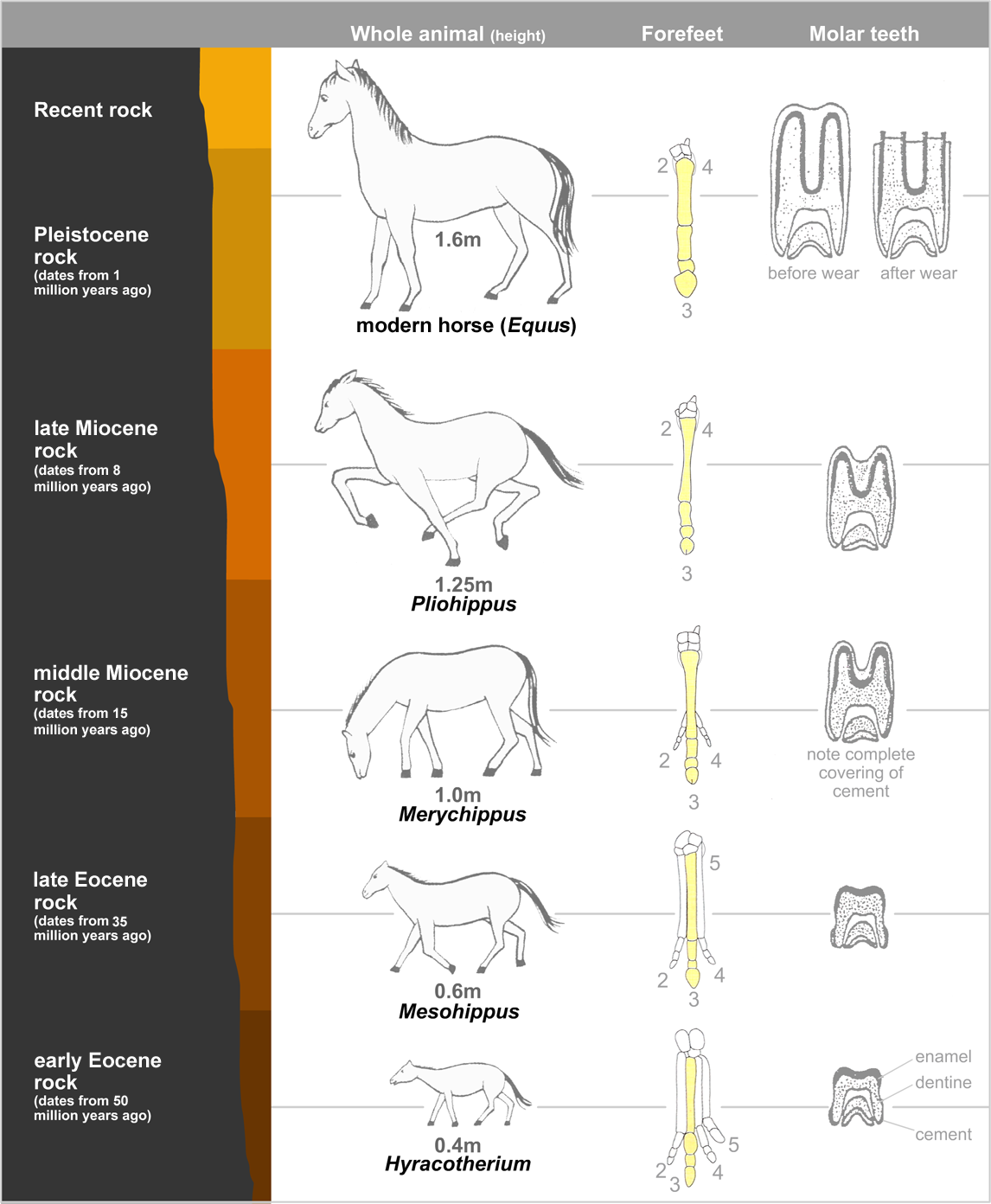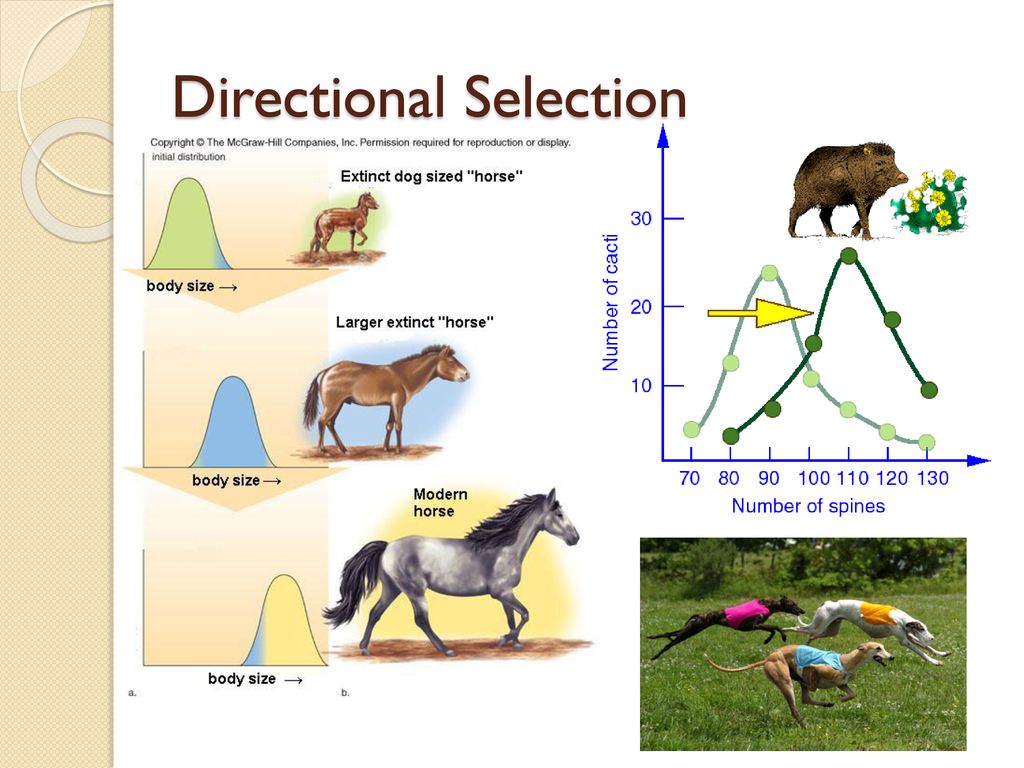Directional selection in the modern horse is demonstrated by the gradual increase in size over time. Current published data on directional asymmetry DA in horses refer to racing Thoroughbreds.

9 3 Evidence For Evolution Biology Libretexts
This is an example of _____.
. Much of this evolution took. In what type of environment is being heterozygous in regards to. Directional selection in the modern horse is demonstrated by A.
The gradual increase in size over time. 3 Draw a graph showing directional selection and explain how the population changes. BMI provides another important example of evidence for directional selection on an anthropometric trait.
A directional selection is a force in nature that causes a population to evolve towards one end of a trait spectrum. Directional selection in the modern horse is demonstrated by. The present-day Przewalskis horse is believed to be the only remaining example of a wild horseie the last remaining modern horse to have evolved by natural selection.
We estimate that the r g rLRS for BMI is 0104 00344 P 10 26 in females and 031 0046 P 10 10 in males. The gradual decrease in size over time. The gradual increase in size over time.
Directional selection in the modern horse is demonstrated by A populations consisting of only very dark and very light colored horses. Directional selection is a type of natural selection in which the phenotype the observable characteristics of the species tends toward one extreme rather the mean phenotype or the opposite extreme phenotype. This animal called the dawn horse genus Hyracotherium lived more than 50 million years ago.
The transitional forms are well preserved as. Numbered bones in the forefoot illustrations trace the gradual transition from a four-toed to a one-toed animal. Natural Selection and Horse Evolution The evolution of the horse involves the gradual development of the modern horse from the fox-sized forest-dwelling Eohippus.
Stabilizing selection results in a decrease of a population genetic variance when natural selection favors an average phenotype and selects against extreme variations. The extinction of other horse species. Evolution of the horse over the past 55 million years.
In directional selection a populations gene. Eleven functional limb and four non-functional facial bilateral traits were measured on left and right sides in a cohort of 100. Directional selection is one of three widely studied types of natural selection in addition to stabilizing selection and.
Paleozoologists have been able to piece together a more complete outline of the evolutionary lineage of the modern horse than of any other animal. The rapid decrease in size over time. The aim of this study was to identify whether horses and ponies exhibit directionality of trait asymmetries.
The horse can be traced to an animal the size of a dog having several toes on each foot and teeth appropriate for browsing. Phloem cortex cork cambium and cork. The original sequence of species believed to have evolved into the horse was based on fossils discovered in North America in the 1870s by paleontologist Othniel Charles Marsh.
Directional selection in the modern horse is demonstrated by _____. Removing bark from a tree means that ____ are removed. Paleozoologists have been able to piece together a more complete picture of the modern horses evolutionary lineage than that of any other animal.
The rapid increase in size over time. The evolution of the horse a mammal of the family Equidae occurred over a geologic time scale of 50 million years transforming the small dog-sized forest-dwelling Eohippus into the modern horse. Directional selection to insecticide resistance in the insects.
Up to 24 cash back the horse. The most recent form the modern horse Equus is much larger in size is one-toed and has teeth appropriate for grazing. The sequence from Eohippus to the modern horse Equus was popularized by Thomas Huxley and became one of the most widely known examples of a clear evolutionary.
Directional selection is a type of natural selection that happens when the extreme phenotype on one end of the spectrum is more favorable than the extreme phenotype on. Due to selection populations are always changing. Direction selection in the modern horse is demonstrated by a the gradual increase in size over time b the gradual decrease in the size over time c the rapid decrease in size over time d the rapid increase in size over time.
Directional Selection Definition. British land snails primarily occur in two extreme phenotypes. Updated on September 20 2019.
While some traits are discrete and have specific variations think eye color other traits are continuous and exists as a wide range of nearly infinite values think heightIf a discrete trait goes through a directional. The gradual increase in size over time. Modern horses descended from a species that had a foot with four hoofs.
These results are qualitatively similar to our phenotypic results which indicated positive directional selection in both sexes with a larger. Identify the following two types selection demonstrated in the graphs below and explain how the population has changed. What is the role of auxin in regards to plant growth.

Evolution And Speciation Ppt Download

Chapter 15 Notes Natural Selection And The Theory Of Evolution Ppt Download
Comparative Population Genomics Unveils Candidate Genes For Athletic Performance In Hanoverians Document Gale Onefile Health And Medicine
0 Comments